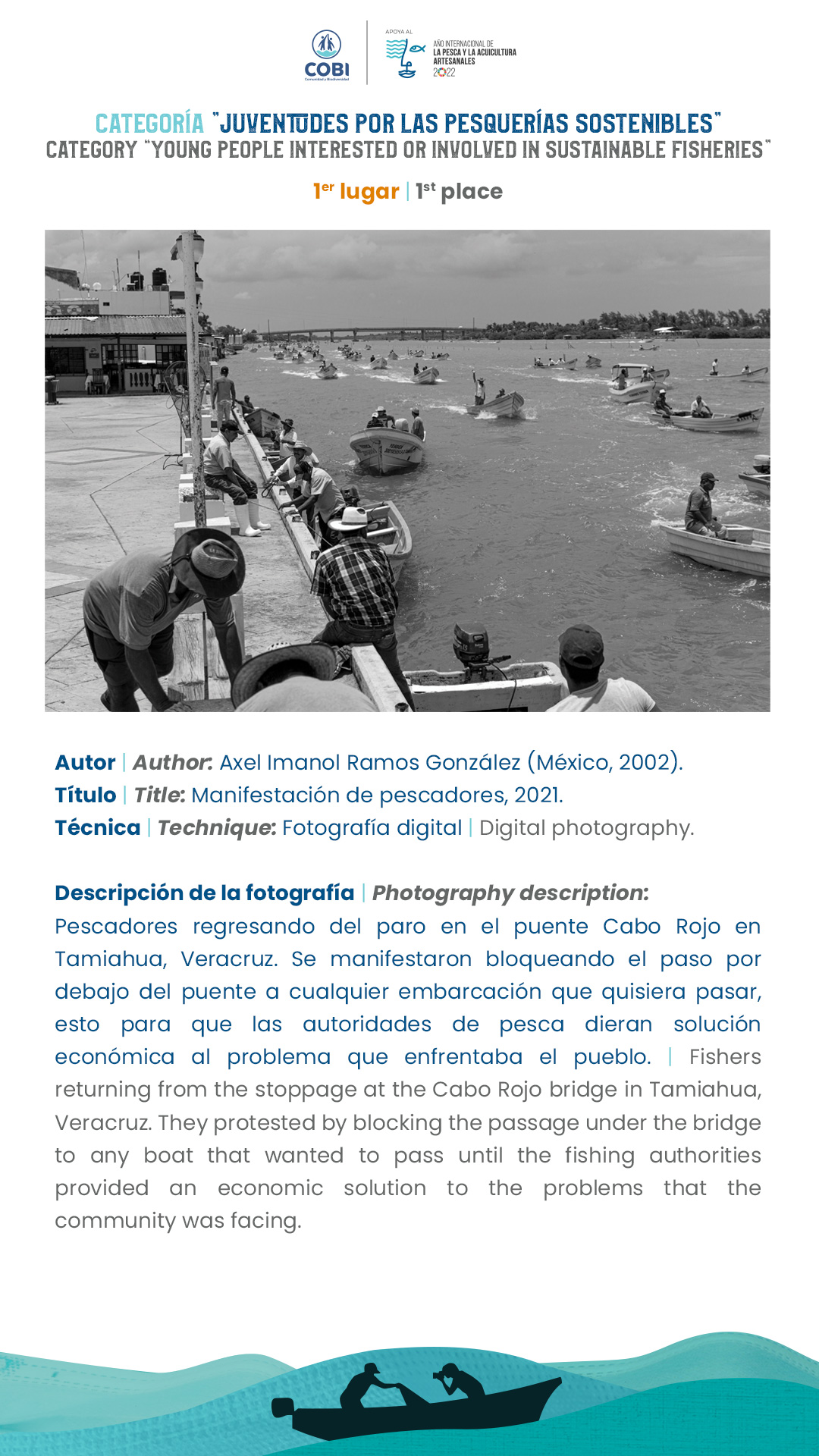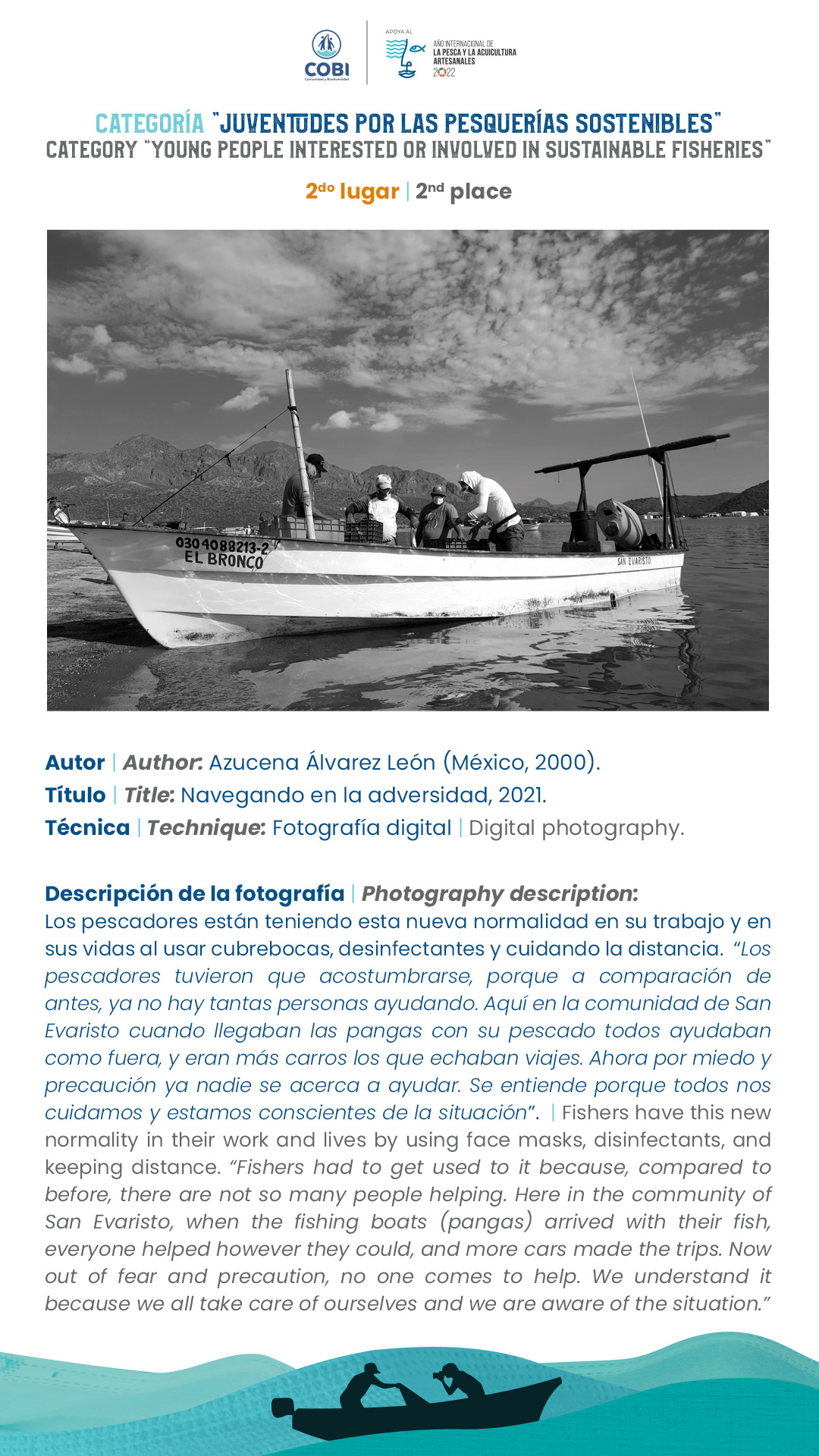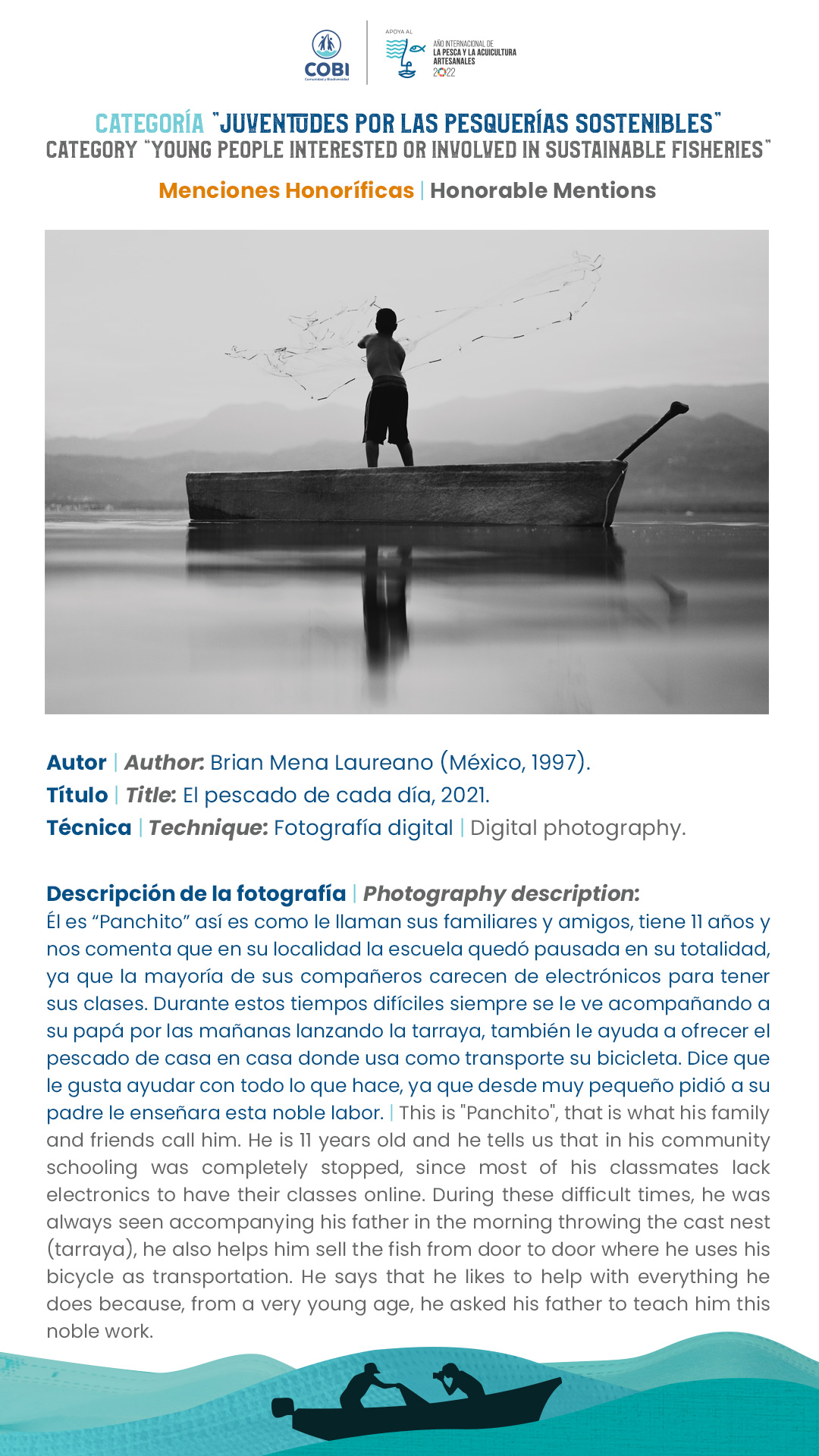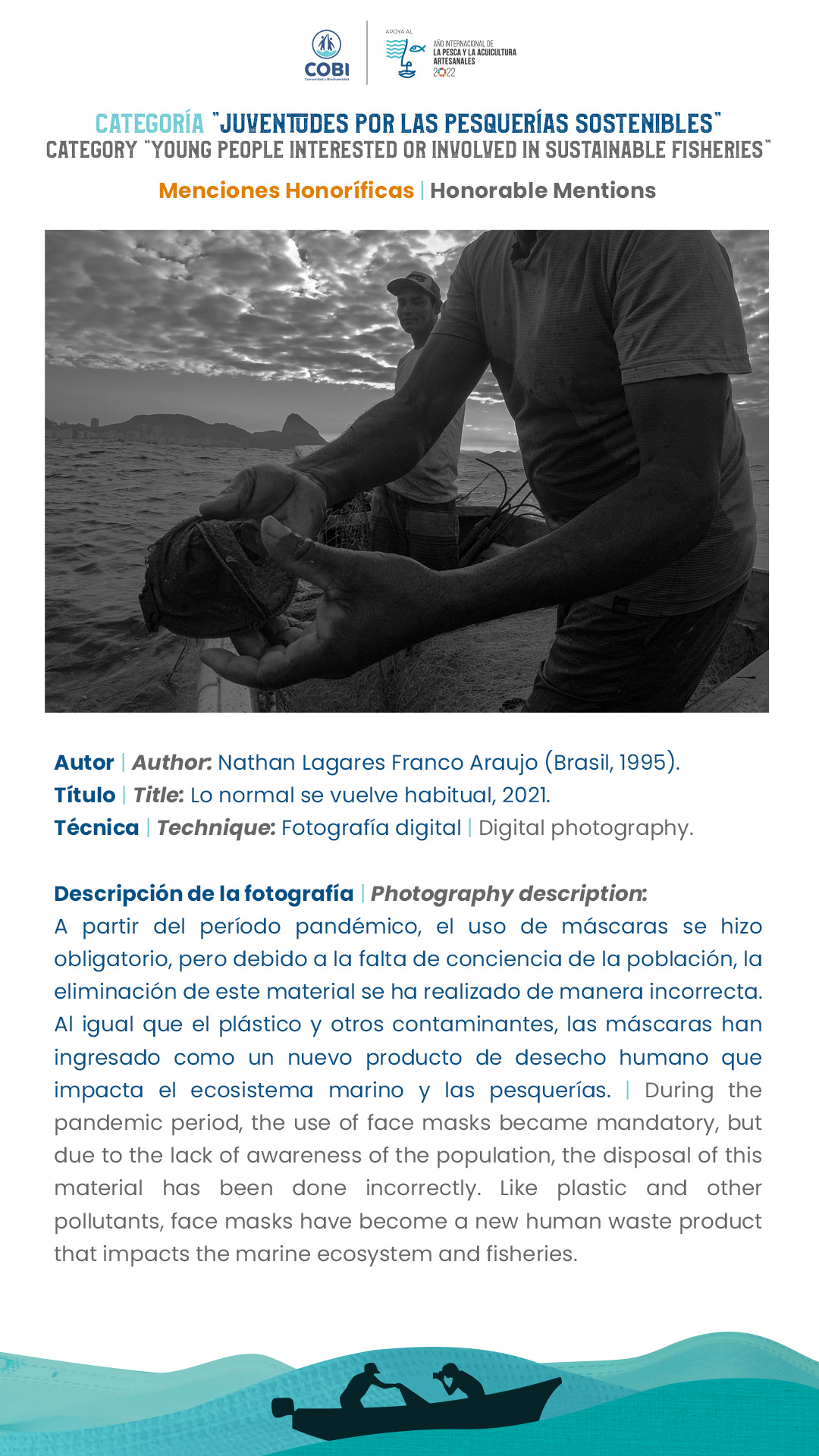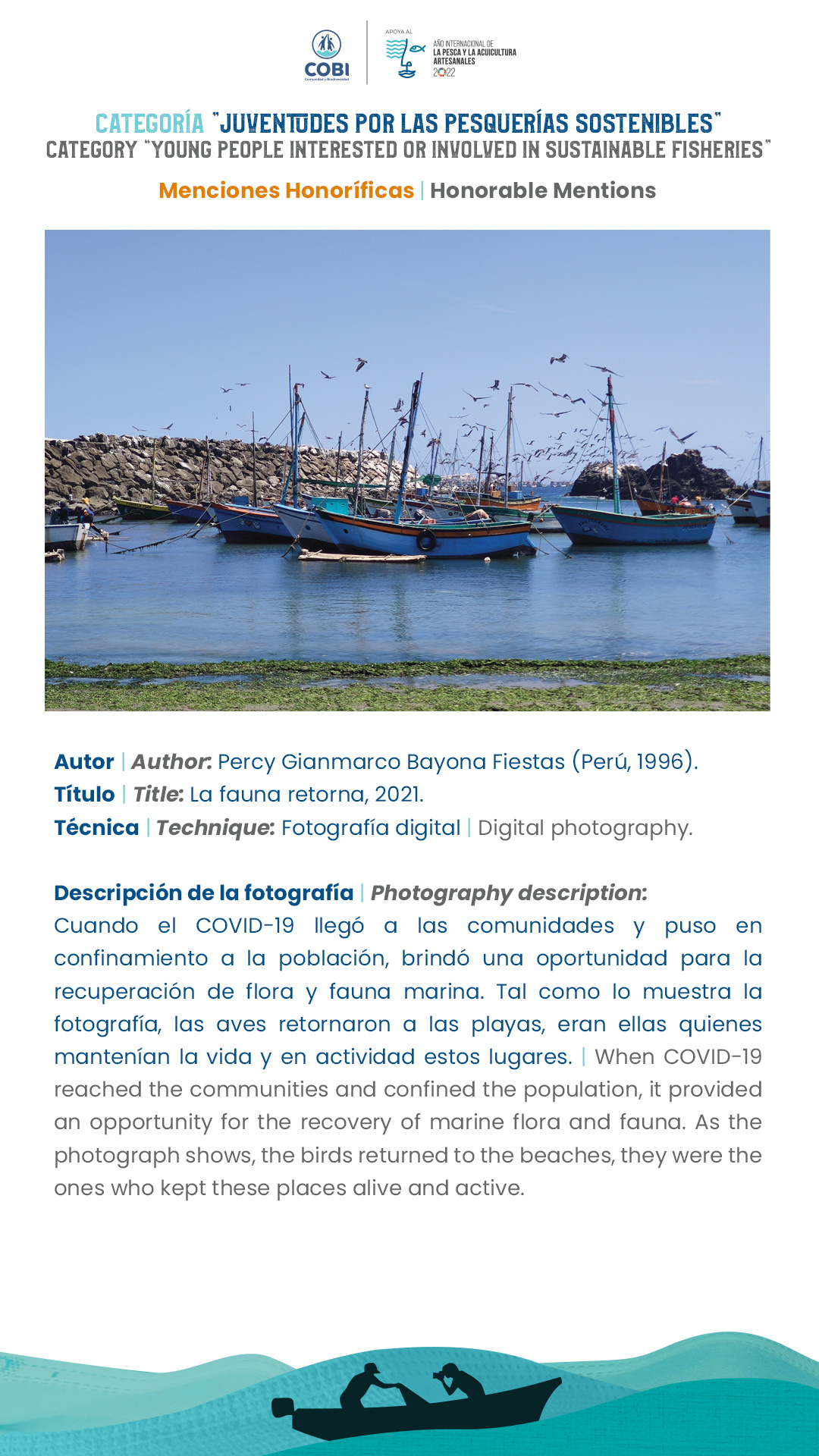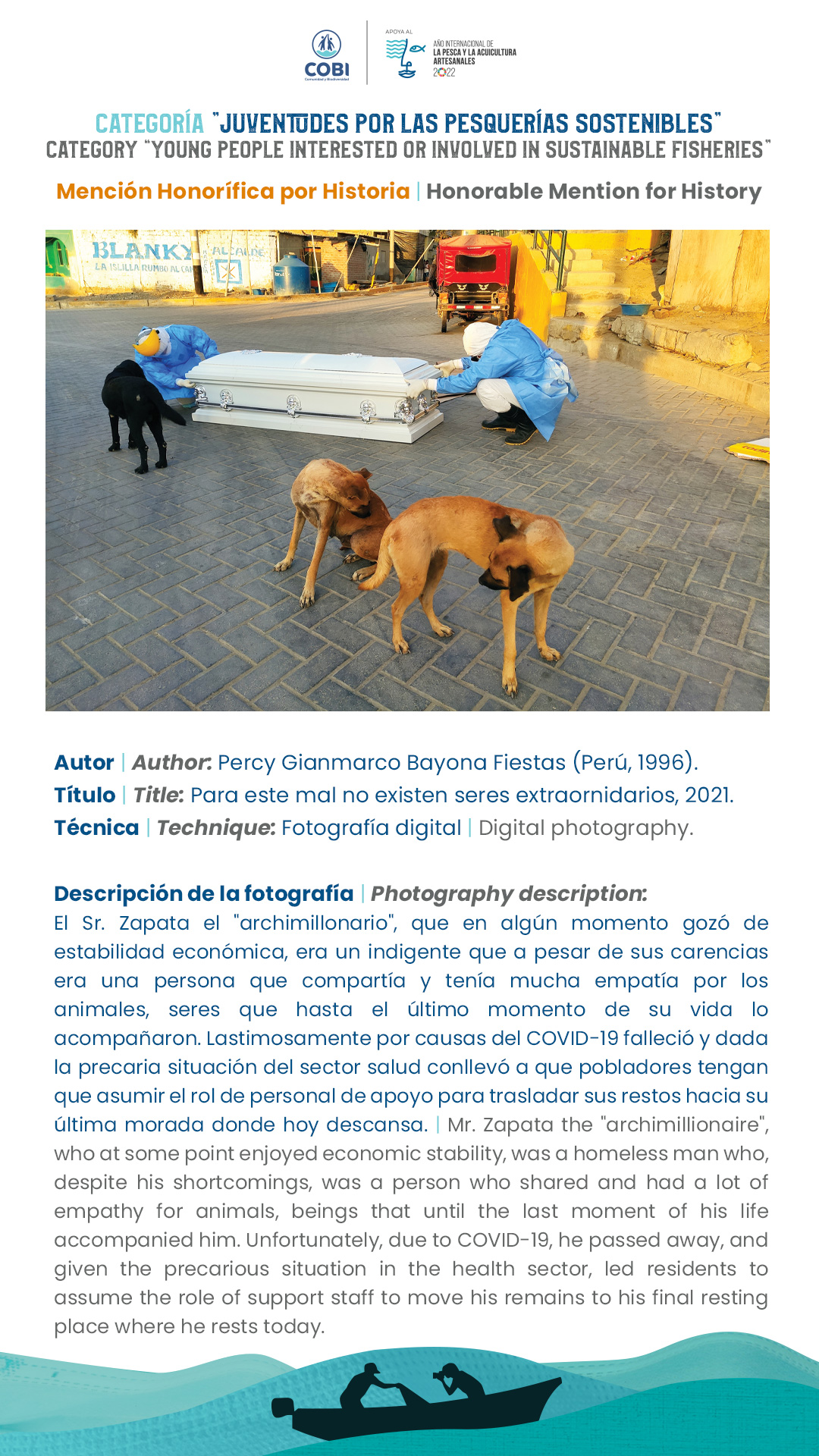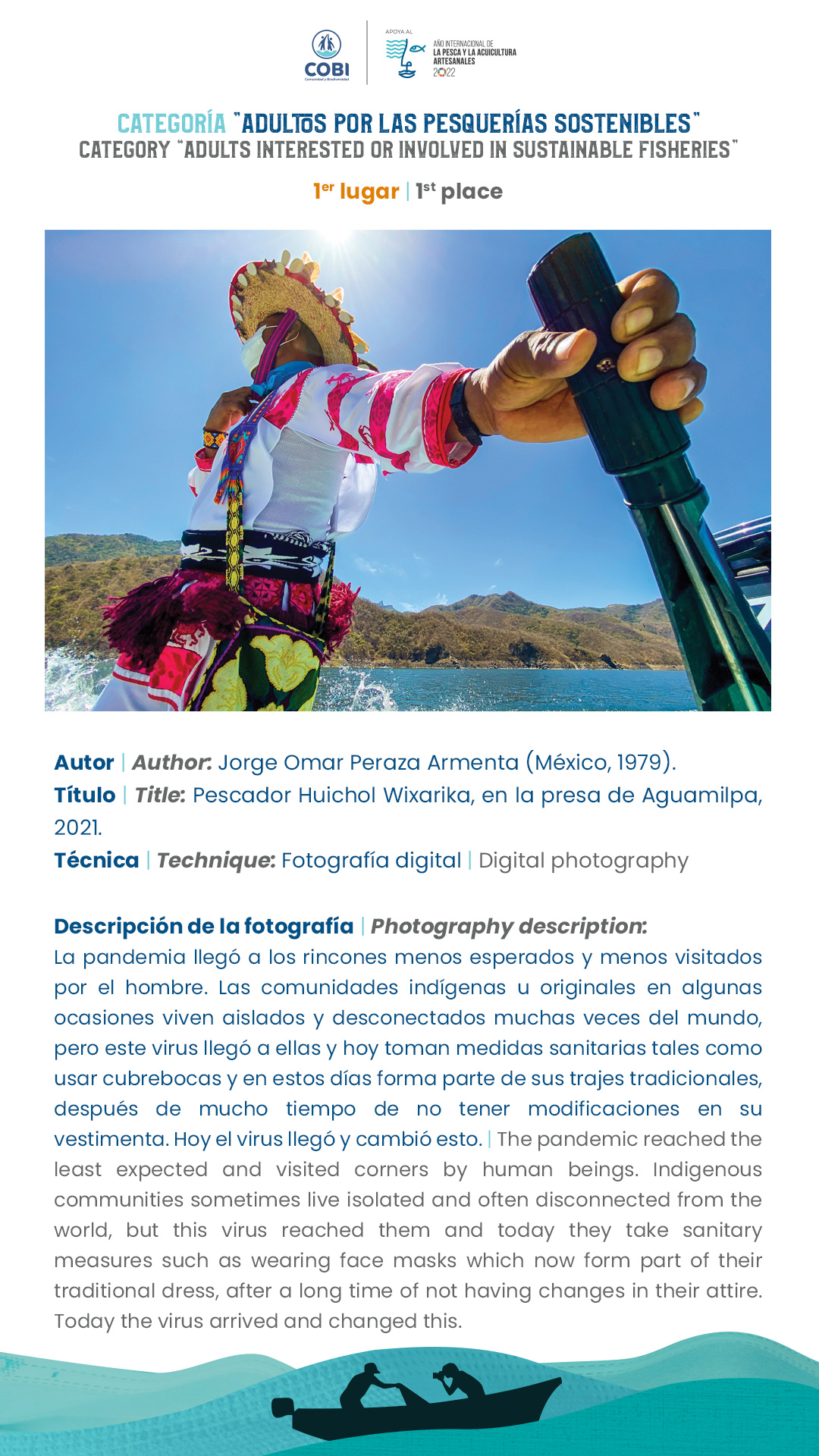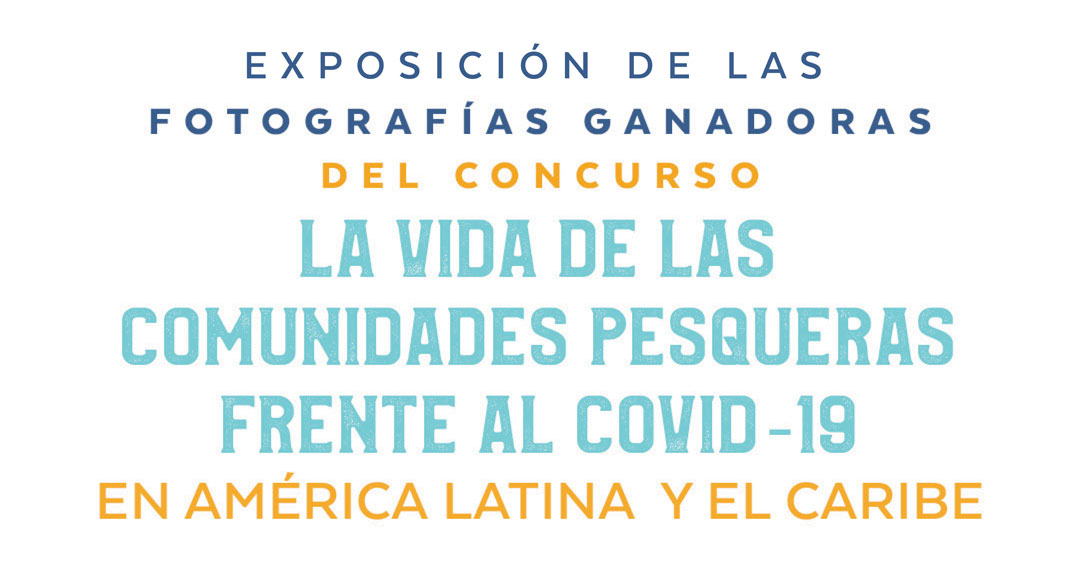
2020 symbolized a year of change for the planet and adaptation for those of us who inhabit it. During the first quarter of that year, the presence of the disease caused by the Coronavirus SARS-CoV-2 (COVID-19) was recognized in Mexico. However, apart from immersing themselves in the misfortune of shipwreck in the face of the unknown and the uncertain future, the coastal communities demonstrated their commitment, leadership capacity and resilience to face the environmental, socioeconomic and governance challenges that have resulted from this health crisis.
This is how “Life in the fishing communities in the face of COVID-19 in Latin America and the Caribbean” was born, a photography contest to understand, from the perspective and lens of the youth, women and men of the coastal commu- nities, the stories, essence and daily experiences in the region, during a moment of social and health vulnerability.
At the close of the call, we received more than 100 photographs from nine Latin American countries: Brazil, Chile, Colombia, Ecuador, El Salvador, Guatemala, Honduras, Mexico and Peru, which were grouped in the categories of 1) Young people interested or involved in sustainable fisheries and 2) Adults interested or involved in sustainable fisheries. With the support of a multidisciplinary qualifying jury made up of five people with experience in photography, fishing and sustainability, three first places and five honorable mentions per category were defined.
Through this exhibition, and in the framework of the International Year of Artisanal Fisheries and Aquaculture, we invite you to see the winning photographs of this significant contest, representing different thematic axes framed in the COVID-19 pandemic, such as such as social economic impacts, the role of the State, local solutions, gender and fisheries, access to health services, the digital divide, environmental impacts and what the new normality in fishing looks like.




